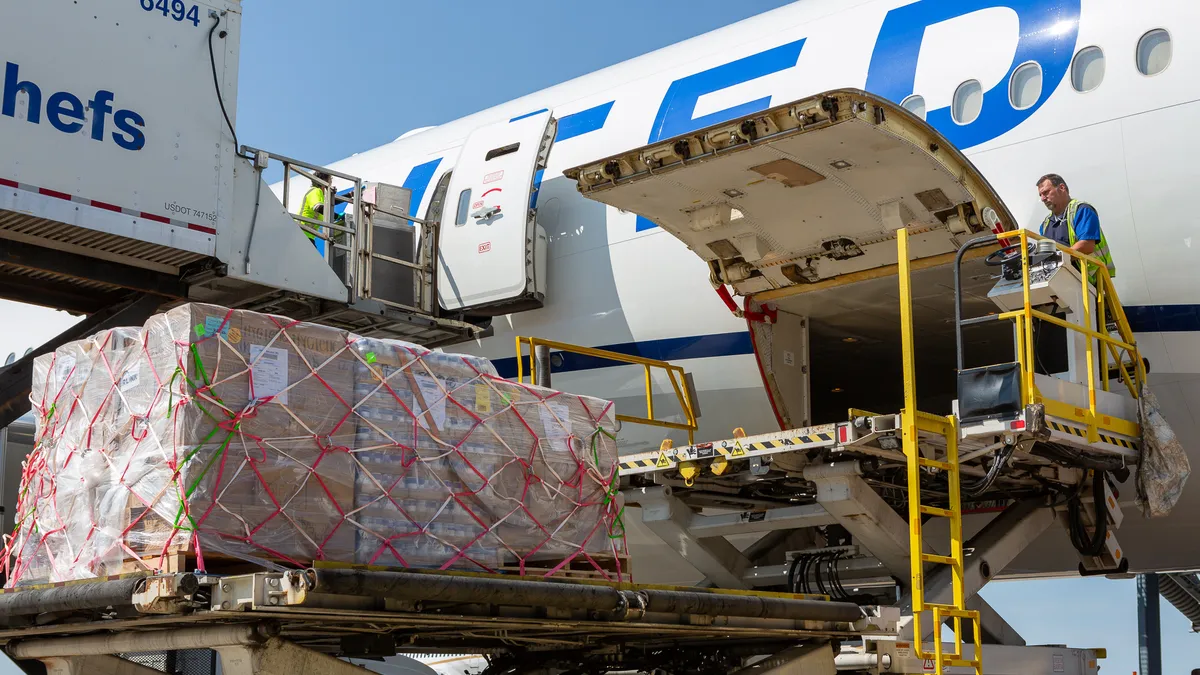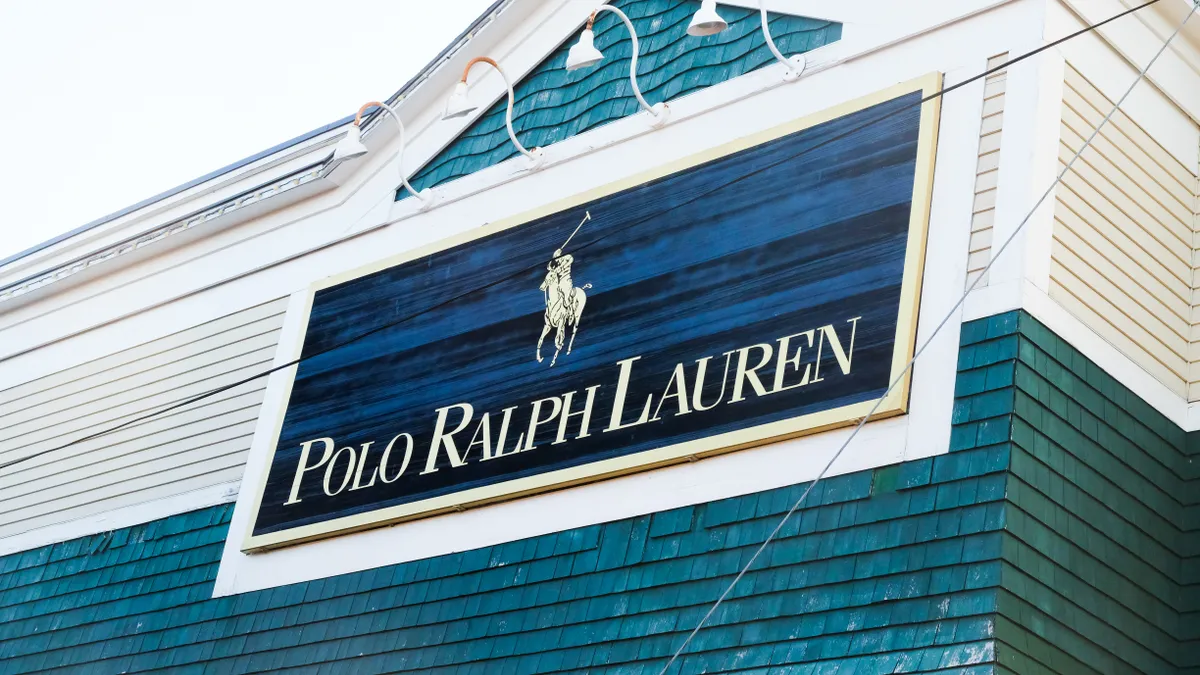This Valentine’s Day, about 35% of Americans are expected to buy flowers. It’s the top holiday for florists, anticipated to bring $2 billion to the floral market this year, according to the U.S. floral industry trade association, the Society of American Florists.
While it’s easy for customers to pick up flowers at the local grocery store, florist shop or to seamlessly order arrangements online, not surprisingly there’s up to a year of forecasting and planning for what one representative from online flower delivery company FTD calls a “last-minute holiday.”
Don’t underestimate the importance of this holiday to the floral industry. The biggest floral holidays are Valentine’s Day and Mother’s Day, but Valentine’s Day is a big percentage of yearly sales, said Victor DiPrato, a sales person at the wholesale Hartford Florist Supply in Connecticut.
High volume, perishable products, fickle winter weather and long transportation routes means that the supply chain must be working smoothly to get the fresh flowers in the customers’ hands at the right time.
The cold chain
Lovebirds around the country can thank the cold chain for allowing them to adorn their tables with blooming buds every February, and actually all year round.
That’s because most of the flowers sold in the U.S. come from abroad. California is the main domestic floral producer, but it only accounts for only a small percentage of the flowers sold here, though these flowers too must be maintained in the proper environment for quality purposes. The rest of the flowers primarily come from South America, Africa and Europe.
Miami International Airport is the main port of entry for the planes full of flowers. In 2014, U.S. Customs and Border Patrol inspected 801 million cut flower stems during the Valentine’s Day period, January 1 to February 14. These stems are stored in refrigerated rooms at the airport before hopefully moving via refrigerated truck or plane to other parts of the country, with some going directly to consumers via UPS or FedEx.
Flowers then transported to regional airports are ideally moved quickly to a refrigerated distribution center. Here, they’re sometimes made into arrangements or bouquets and sent out directly to the consumer, or they go to the florist’s refrigerator before local delivery.
The longer the flowers remain in a cooled area, the longer they’ll survive. According to Hartford Florist Supply, the flowers do best when cooled to 33-35 degrees at the grower’s site, and maintained around that temperature during their entire journey through the cold chain, starting with the truck ride from the grower to the local airport.
Unfortunately, not all regional airports, domestic airplanes or regional wholesalers have that refrigeration. Hartford Florist Supply said that a cold chain interruption can cause a 30-40% loss of vase life for the flowers, even if they’re put back into a cold environment.
The Valentine’s Day timeline
FTD has a long lead time for the flowers and containers, with both ordered nine months to a year ahead. “For the hot selling items, we want to make sure we secured those for next year, like containers and vases that go into these arrangements,” said Heidi Vicino, manager of partnership marketing at FTD.
While FTD starts putting together their partner marketing materials three to six months before Valentine’s Day, they start talking to florists about their Valentine’s Day orders a few months ahead. They’ll discuss the type and quantity of flowers each florist may need for a productive holiday.
The day after Christmas, wholesaler Hartford Florist Supply sends price lists to retailers, along with their prior year’s orders for planning purposes. They send their supply list to the growers in mid-January, for arrival starting February 1.
FTD has a long lead time for the flowers and containers, with both ordered nine months to a year ahead.

Supply Chain Dive
The week before Valentine’s Day is crunch time. The florists start “greening up” a few days before the holiday, said Vicino. They’re premaking bouquets with the greenery in them. The florists are also planning out delivery logistics, checking their order numbers, delivery zip codes and routes. They may also hire extra drivers. This is done in advance so the florist has the arrangements ready to go at the right time. For same-day orders, florists need to check current inventory as well as driver and arranging capacity before agreeing to an order.
The arrangements are filled with the flowers a day or two before Valentine’s Day. Some florists offer a discount for February 13 delivery, to spread them out.
The floral timeline and forecasting
Growers start growing the roses a year ahead of time, Vicino said. Roses are the biggest seller, with 63% of floral purchases including red roses, according to the Society of American Florists. They typically come from South American countries like Chile, Columbia, Ecuador and Venezuela. About 250 million roses are grown for the holiday.
And even though FTD starts planning a year in advance, “Valentine’s Day is a last-minute holiday,” she said. That’s because most of the orders come from men, who tend to delay making their flower plans. Typically, FTD consumers are 60-65% women for most floral ordering, she said, including Mother’s Day. For the February holiday, though, 75% of the orders come from men.
Minimizing variability makes the florists’ job easier, and there’s less excess product. FTD proactively slimmed down the number of designed arrangements. “For Valentine’s Day, which is different than most other holidays, most consumers stick with reds, pinks and sometimes whites,” Vicino said. This helps the florist ensure they’re not stocking up on colors or varieties that won’t sell. Consumers can still choose a custom bouquet, but if it’s the florists’ design, the florist will likely use the same types of flowers as the other arrangements.
DiPrato said his wholesale floral company orders extra flowers on spec, but not too many since there’s a shelf life.
To forecast the orders, FTD looks at year-over-year data as well as the day of the week that Valentine’s Day falls. “Unfortunately for data purposes, the last Valentine’s Day on a Tuesday was in 2012,” Vicino said. Since then, the number of people ordering flowers on a mobile device or tablet has exploded, she said, so comparative data is more difficult to obtain.
And last year, Valentine’s Day was on a Sunday. “As an enterprise, we see that if Valentine’s Day is on a weekend, then the inventory a florist needs will go down,” she said, as men are more likely to take their partners out to dinner or another activity. On a weekday, “every woman in my office and most offices, wants those bouquets planted on their desk for everyone to see. They want to see who has the biggest arrangement,” Vicino said. Florists get more orders when Valentines’ Day falls on Tuesdays through Fridays.
The entire cold chain process means nothing if the flowers quickly die or don’t look good.

Supply Chain Dive
Another factor in the flower planning forecast: the weather. If a snowstorm is predicted for Valentine’s Day, even stores with heavy foot traffic will pull back on inventory. “Some florists use the Farmers’ Almanac as a weather reference,” Vicino said.
Keeping the flowers fresh
There’s usually a 10-day span from arrival at the floral warehouse to customer delivery, and roughly a 24-day period from the grower to the customer. “It’s a long process,” DiPrato said, and the way they stems are cut and packed, along with refrigeration is what allows them to have the long life. Once they’re put into water, they start to bloom, but they also start to die, he said.
The stems can initially be left dry, and they’re usually not shipped in water. Not only does it take more resources to ship flowers in water, but the blooming and dying process quickens. Florists start putting them in water about seven days after they’re cut, DiPrato said.
The entire cold chain process means nothing if the flowers quickly die or don’t look good. The Valentine’s Day flowers on this holiday of love should last two to three weeks at customer level, DiPrato said. If not, perhaps there was a lapse somewhere in that cold chain.













